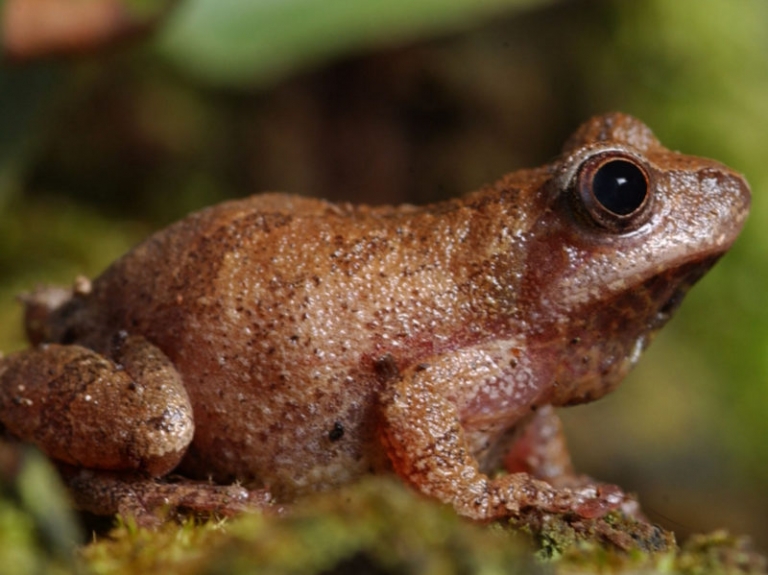BEAVER, W.Va. — Say what you will about groundhogs, their ability to predict the arrival of spring is nowhere near as accurate as that of frogs: like clockwork, spring peepers will herald the return of light and warmth in central Appalachia in late February and early March.
Triggered by rising temperatures, the tiny frogs (Pseudacris crucifer) will begin singing in vast numbers at about the time meteorological spring begins on March 1, and the phenomenon is one of the most welcome in the mountains.
"If you're listening, it's the first frog you're going to hear in the spring," says Lauren Cole, the naturalist at Chief Logan State Park, which is one of the first state parks in West Virginia in which they're likely to be heard, as a result of its low elevation and relative warmth.
Cole and other park officials in February are already preparing for the onset of spring and the park's famous Sue Browning Wildflower Hike, celebrating its 40th year on April 1, 2023. The event is one of the first scheduled wildflower events in the state, thanks to the warmth of the lower valley of the Guyandotte River.
Cole said she'd been accustomed to hearing spring peepers singing in early March, though due to recent warming trends, their choruses may begin in late February in low-lying valleys. Their song may not be heard in the uplands until late March.
The frogs are a species that can survive freezing temperatures, which allows them to emerge during cold weather and begin breeding when daytime temperatures warm significantly.
"What you're hearing is the male frogs calling to the female frogs," Cole said.
The frogs typically live near water, where they can lay their eggs, and in moist soils. Though they may live in larger bodies of water, they can also thrive near small ponds, roadside ditches, and vernal pools, which only exist temporarily.
"They typically live in the woods under logs or underneath bark, but when it warms up, that's their signal to come down to lower wet areas to mate," she said.
Sign up to receive of FREE copy of West Virginia Explorer Magazine in your email weekly. Sign me up!





























